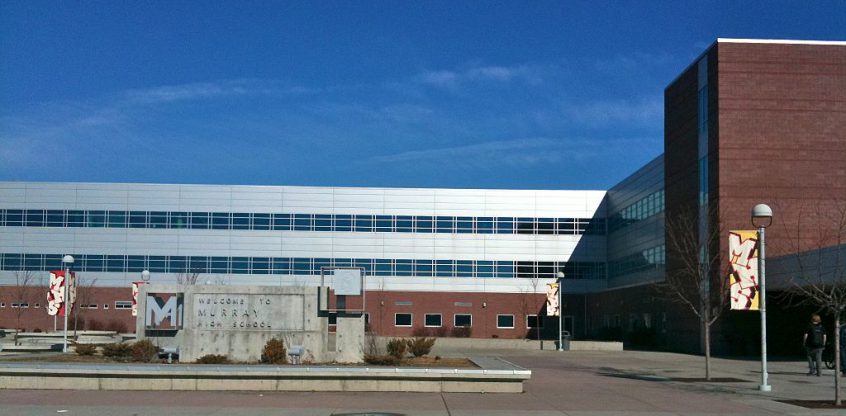“Earthquakes happen when they wanna happen,” says Doug Perry, public information officer for the Murray School District. “Unfortunately, the Magna Quake [March 18] happened in the middle of a pandemic. Not having to worry about our school buildings ─ that they survived and performed well ─ was a huge relief for our district.”
That’s because the Murray School District decided nearly a decade ago to mitigate against future earthquakes and other natural disasters by undertaking a multiyear retrofit program that brought all of its campuses up to current earthquake safety standards.
To some observers it seemed like an unnecessary move. Considerable time had passed since the last significant earthquake along the Wasatch Front and some people felt the threat was low.
However, that didn’t stop Murray School District from conducting a detailed risk assessment of its campuses as a part of a comprehensive capital planning effort in 2011.
“Seismic hazards, given that the schools that needed retrofits were constructed from the 1950s through the 1970s, came to the top of the list as the primary source of risk to the students and employees,” says John Masek, a licensed structural engineer who served as project manager for the Murray retrofits.
Rather than replace the older schools with brand new buildings, the district decided that retrofitting would be far more cost effective.
“Many professional journal articles and news articles have been published on the potential cost advantages of mitigating in advance ─ versus letting facilities be damaged during seismic events and then repairing them, if possible,” adds Masek.
“There’s often a large benefit–cost ratio to mitigating. In other words, it’s often much more cost effective to retrofit before an earthquake than repair or replace buildings after an earthquake damages them. Furthermore, and more importantly, seismic retrofitting helps to protect the lives of students and facility in the facilities.”
The long-term plan that emerged from the risk assessment determined that Riverview Junior High School was the first priority for seismic hazard mitigation.
Following severe flooding across the state, a major disaster declaration was declared in August of 2011, making FEMA Hazard Mitigation Grant Program (HMGP) funds available to Utah communities. Murray School District successfully applied for available HMGP funds through the state and was granted $910,516 for the seismic retrofit of Riverview.
In 2013, Utah lawmakers approved a public-school seismic study requiring all districts that requested bond funding to perform structural seismic investigations on buildings constructed before 1975. That same year, Murray prepared a Multi-Hazard Mitigation Plan making the district eligible to apply for annual pre-disaster mitigation (PDM) funds.
The district secured two FEMA grants totaling $1,984,301 to perform seismic retrofits on four elementary schools in the district (McMillian, Parkside, Horizon and Viewmont.
These FEMA funds supplemented a larger effort by the district to retrofit all ten Murray campuses utilizing $4 million dollars of local bond funds.
The major thrust of the retrofit effort was establishing good exterior roof-to-wall connections on buildings with masonry walls. Meanwhile, some interior walls were braced to mitigate against possible collapse in an earthquake and there was some additional work related to vertical elements and structures.
The various life-safety retrofits were completed on all school buildings prior to the Magna Quake of March 2020. Murray School District reported damage to only one of its retrofitted campuses, a nonstructural footlong crack at Horizon Elementary.
Had more serious damage occurred, a single new building could cost close to $40 million to construct and the life safety of almost 6,500 students throughout the district might have been at risk.
“It’s nice to see that there was virtually no damage to Murray School District structures,” says Masek. “However, several other buildings that were not part of the Murray School District ─ but were of a similar age, use, and in areas of similar ground shaking intensity ─ were damaged during the Magna Quake. I was pleased to hear that the Murray School District retrofits performed well.”
Murray’s multiyear mitigation project was successful because the district started with local planning/prioritization and raised local funds while also leveraging two federal grant programs over several years.
“The cool thing about Murray is the plan execution,” says Masek. “I’ve been involved in many mitigation plans over the years, and this was one of the best in terms of writing the plan and then executing the plan in less than five years. It’s really unusual to be able to do that. It was good work on the part of the district.”
“We’re always interested in putting together plans that will help mitigate risk and protect our students, staff and everyone in the community,” adds Perry. “Retrofitting and preparing ourselves for earthquakes is prudent. It’s simply something we should do, and we can rest easier at night knowing that we’ve done it.”
For more information on local earthquake risk and preparedness visit: https://earthquakes.utah.gov/.
###
FEMA’s mission is helping people before, during, and after disasters.

